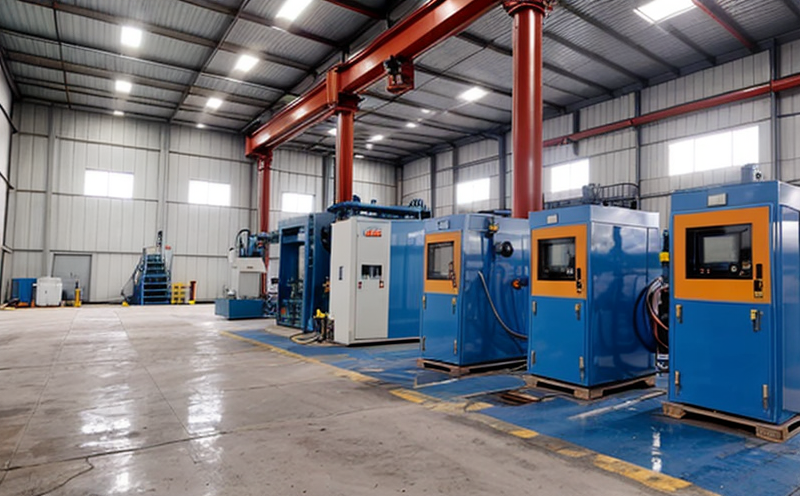ISO 3262 Extenders for Paints Mica Testing
The ISO 3262 standard is a crucial benchmark in the paint industry, specifically addressing the determination of the quantity of extender particles in mica used as an additive. This service ensures that manufacturers adhere to stringent quality control measures and compliance standards, which are essential for maintaining product integrity and performance.
Extenders play a vital role in enhancing the stability, durability, and overall quality of paints by providing additional volume without compromising on color or sheen. In the context of mica extenders, ISO 3262 provides methodologies to accurately measure their quantity within paint formulations. This is particularly important as mica extenders can vary significantly in particle size distribution, which directly impacts their performance and effectiveness.
The testing procedure outlined by ISO 3262 involves a series of steps designed to ensure accurate quantification. These include the preparation of samples, sieving techniques for separating particles into different sizes, and gravimetric analysis to determine the mass fraction of mica extenders in relation to other components. The precision of these methods is critical as even small variations can affect paint quality.
The significance of this service extends beyond just compliance; it also contributes to the development of high-quality products that meet customer expectations and industry standards. For instance, understanding the exact quantity of mica extenders allows manufacturers to optimize their formulations for better performance under various conditions, such as heat resistance or flexibility.
Moreover, this testing is not just about meeting current regulations but also anticipating future trends in the paint industry. As environmental concerns grow and sustainability becomes a priority, knowing precisely how much mica extenders are used can help companies design more eco-friendly products. This includes minimizing waste and reducing the carbon footprint associated with raw material sourcing.
In summary, ISO 3262 extender testing for paints is an indispensable tool for maintaining quality control in the production process. It ensures consistency across batches, supports innovation by providing reliable data, and helps meet both regulatory requirements and customer demands. By leveraging this standard, businesses can enhance their reputation as leaders in sustainable and high-performance paint manufacturing.
Why It Matters
The importance of ISO 3262 extender testing for paints cannot be overstated. Compliance with this standard is essential for several reasons:
- Avoidance of Non-Conformity Issues: Ensuring that the quantity of mica extenders meets specified limits helps prevent non-conformance to international standards, which can lead to product recalls and negative brand reputation.
- Enhanced Product Quality: Accurate quantification ensures consistent paint quality across all batches, leading to improved customer satisfaction and loyalty.
- Innovation and Development: Reliable data from ISO 3262 testing facilitates continuous improvement in product formulations, potentially opening new markets or niche opportunities.
- Sustainability Initiatives: Understanding the precise usage of mica extenders allows for more informed decisions regarding resource management and waste reduction strategies.
- Regulatory Compliance: Adhering to ISO 3262 standards ensures that products meet regulatory requirements, avoiding costly penalties or legal issues.
By integrating this testing into their quality assurance processes, companies can build a stronger foundation for long-term success in the competitive paint market.
Quality and Reliability Assurance
The process of ISO 3262 extender testing is designed to provide accurate and reliable data on mica extenders used in paints. This section will delve into the steps involved, emphasizing the importance of precision and repeatability:
- Sample Preparation: Careful preparation of paint samples is crucial to ensure accurate results. Samples must be representative of the batch being tested to avoid biased results.
- Sieving Techniques: Sieving methods are employed to separate mica extenders into different particle size fractions. This step ensures that all particles within the specified size range are captured for analysis.
- Gravimetric Analysis: The final mass fraction of mica extenders is determined through gravimetric analysis, which provides precise measurements of the quantity present in each sample.
The reliability of these methods is further enhanced by regular calibration and validation against known standards. This ensures that any discrepancies are identified early on, allowing for corrective actions to be taken promptly.
Moreover, the consistency across multiple tests conducted under similar conditions demonstrates the robustness of this testing procedure. Such repeatability is vital in maintaining high-quality standards throughout production processes and supporting continuous improvement initiatives.
Environmental and Sustainability Contributions
The ISO 3262 extender testing for paints has significant implications beyond just quality assurance; it also plays a pivotal role in promoting environmental sustainability:
Eco-friendly Formulations: By accurately quantifying the use of mica extenders, companies can better tailor their formulations to meet both performance needs and environmental goals. This leads to more sustainable product development, which is increasingly important for consumer preferences.
Resource Efficiency: Understanding the exact amount of mica extenders used enables better management of raw material resources. This reduces waste generation during production processes and optimizes resource utilization.
Reduced Carbon Footprint: The precise measurement provided by ISO 3262 testing allows for more informed decisions regarding logistics, transportation, and manufacturing practices. These insights contribute to lowering the overall carbon footprint associated with paint production.
In conclusion, implementing ISO 3262 extender testing is not only beneficial for maintaining quality standards but also supports broader sustainability efforts within the industry. It provides a pathway towards more responsible and efficient operations that align with global environmental objectives.





